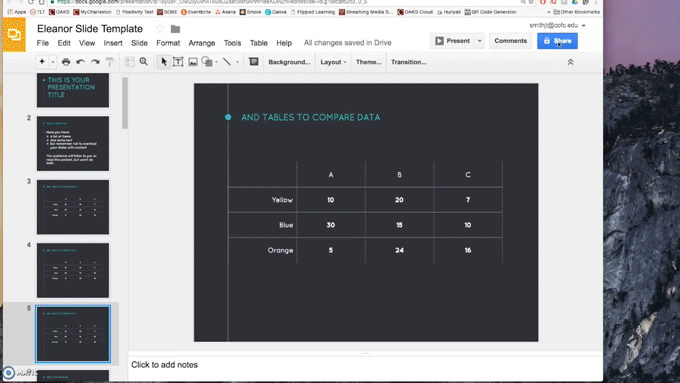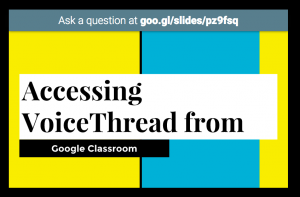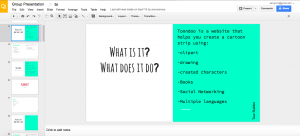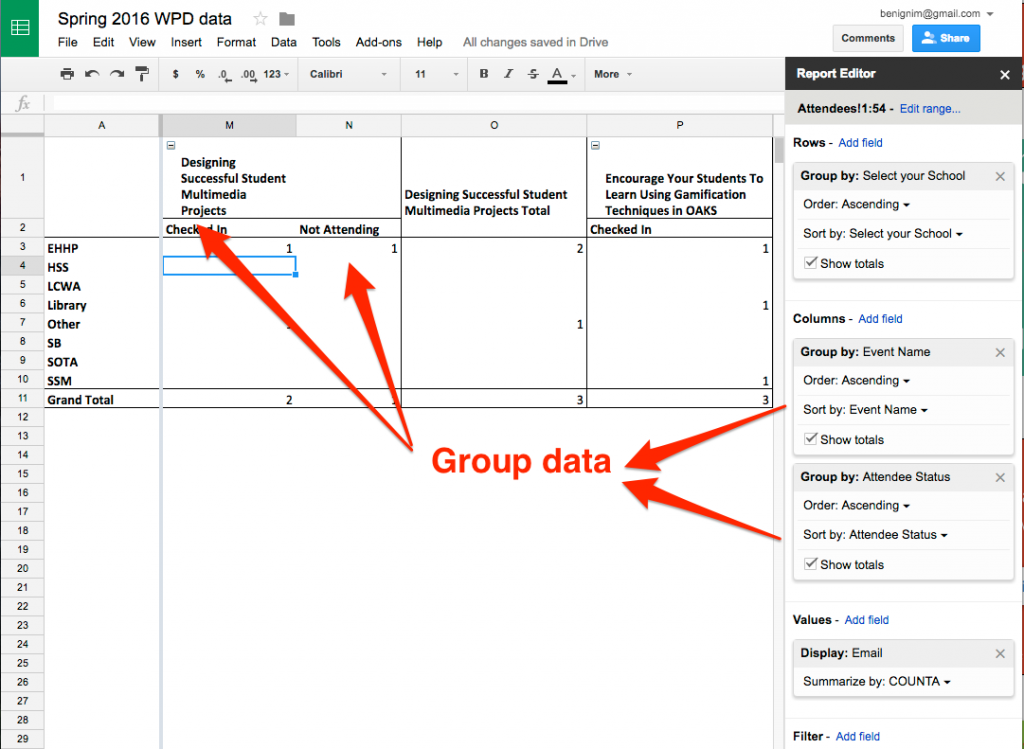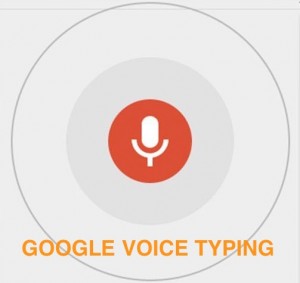I have always said that if I could only have two applications on my computer it would be Photoshop and Microsoft Excel. With those two applications I can do almost everything I need to do in a day. Lately, however, my eye has drawn to Google Sheets, and I have to say, I love it.
Now some of you may be saying, “Why do I care? I don’t teach accounting.” Well you don’t have to teach accounting to use spreadsheets in your teaching. They are great for collecting text-based information, running statistics and doing calculations, and graphing and analyzing text or data. So now that you are ready to use spreadsheets in your classroom, here are 6 reasons why you should use Google Sheets instead of Excel.
Reason 1: Collaboration
Unlike Excel, Google Sheets is collaborative. All CofC students already have Google accounts so it’s very easy to share a spreadsheet with them or for them to share with one another. When collaboratively editing a sheet each student can see the exact cell that is currently selected all other users, to prevent overwriting. There is also a built-in chat function so students can communicate online while collaborating on a Sheet.
Reason 2: Revision history
 How many times have you heard, “Student X didn’t contribute anything to the project.” Now you can see exactly who contributed what and when using the Revision History. The built-in revision history gives you a timeline of all changes and additions to the spreadsheet, who made each one and when they made it. Just go to File > Revision History to see this record. The best part? This is all automatically recorded. While you can track revisions in Excel, it’s a more manual process and in the end, still leads to multiple versions and things being overwritten.
How many times have you heard, “Student X didn’t contribute anything to the project.” Now you can see exactly who contributed what and when using the Revision History. The built-in revision history gives you a timeline of all changes and additions to the spreadsheet, who made each one and when they made it. Just go to File > Revision History to see this record. The best part? This is all automatically recorded. While you can track revisions in Excel, it’s a more manual process and in the end, still leads to multiple versions and things being overwritten.
Reason 3: Sharing
Google Sheets are easy to share. Because they are already online, Sheets can be shared to OAKS or a website, using a link. These links can be set to allow the users to only view the sheet or to edit it. This is particularly handy if you want to post a spreadsheet in OAKS. Just go to Content and select New > Create a Link and paste in the shared link to your Sheet, making the file easy for the students to locate and easy to work on collaboratively as a class. This is something that can’t be done with Excel (Note: I believe this feature is available in Office 365).
Reason 4: The power of Google
From Alice Keeler, “Because of its tight integration with Google, Sheets can import all kinds of data from other Google services and the web at large. You can translate the contents of a cell using the function GOOGLETRANSLATE(), or you can fetch current or historical securities info from Google Finance with the function GOOGLEFINANCE(). And with Sheets IMPORTFEED and IMPORTDATA functions, you can pull information from the internet directly into your spreadsheet.” (Teacher Tech)
Reason 5: Google Forms
When paired with Google Forms it’s an easy way to collect data. Google Forms, also part of Google Drive (a.k.a. G-suite), allows for quick and easy form creation that professors and students can use to collect data. These forms can be completed by anyone, on campus or off, with or without a Google Account, and the data is dumped right into a Google Sheet. This can be used to replace an audience response system in your class, to check for understanding, to conduct peer evaluation, to collect lab data, etc. Once the data is in the spreadsheet, students can work with the data online or export the Sheet to Excel in order to take advantage of Excel’s more powerful functions and data analysis tools.
Reason 6: Explore with Graphs
 Sheets has a super cool EXPLORE icon in the lower right corner of every spreadsheet. This offers a quick overview of the data in chart format. You can view the entire sheet or just specific rows or columns. It’s a fast way to get a first look at the trends in your data before moving on to your own analysis. Just click on the icon and Google does the rest. Don’t worry, if this doesn’t provide enough analysis you can always create your own graphs, pivot tables, and calculations. Excel doesn’t have this feature that I can find.
Sheets has a super cool EXPLORE icon in the lower right corner of every spreadsheet. This offers a quick overview of the data in chart format. You can view the entire sheet or just specific rows or columns. It’s a fast way to get a first look at the trends in your data before moving on to your own analysis. Just click on the icon and Google does the rest. Don’t worry, if this doesn’t provide enough analysis you can always create your own graphs, pivot tables, and calculations. Excel doesn’t have this feature that I can find.
These are just my top 6 reasons to use Google Sheets. I have a ton more. So, can I do everything I did in Excel in Google Sheets? No, I can’t. Excel’s statistical analysis features and functions are still more powerful and probably always will be, but that’s not really what I use spreadsheets for much anymore. Most of the features I used in Excel, like shifting cells, can be done via a Google Add-on, which is a little extension that you can load to increase Sheet’s functionality. Given that, there’s very little need for me to go back to Excel.
Still not sold?
Check out Alicekeeler.com. Alice Keeler is a Google Sheets guru and she always has some amazing cool tricks that you can do with spreadsheets in the classroom. She has written some Add-ons for Sheets that allows you do have more control and automate some processes. Teacher Education folks, you will love her as all of her examples are from her classroom experience. Check out this one:
Have everyone contribute to their own tab – Give students their own and collaborate. This add-on takes your class roster and automatically creates a spreadsheet tab customized for each student in your class. It can even copy a template to each tab. What a great timesaver!
 You can search the web for royalty free images directly from Slides or you can upload images from your computer (note: Pixabay.org gives you free images to use).
You can search the web for royalty free images directly from Slides or you can upload images from your computer (note: Pixabay.org gives you free images to use). You can add charts (pie, line, bar, and column charts) from directly within Slides.
You can add charts (pie, line, bar, and column charts) from directly within Slides.



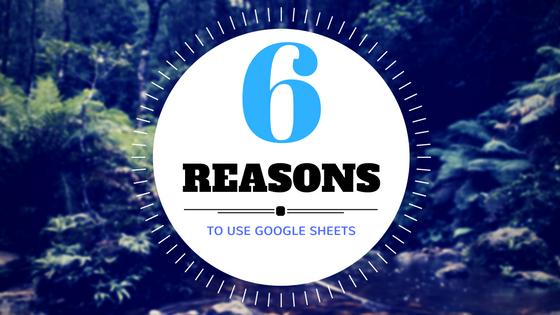
 How many times have you heard, “Student X didn’t contribute anything to the project.” Now you can see exactly who contributed what and when using the Revision History. The built-in revision history gives you a timeline of all changes and additions to the spreadsheet, who made each one and when they made it. Just go to File > Revision History to see this record. The best part? This is all automatically recorded. While you can track revisions in Excel, it’s a more manual process and in the end, still leads to multiple versions and things being overwritten.
How many times have you heard, “Student X didn’t contribute anything to the project.” Now you can see exactly who contributed what and when using the Revision History. The built-in revision history gives you a timeline of all changes and additions to the spreadsheet, who made each one and when they made it. Just go to File > Revision History to see this record. The best part? This is all automatically recorded. While you can track revisions in Excel, it’s a more manual process and in the end, still leads to multiple versions and things being overwritten. Sheets has a super cool EXPLORE icon in the lower right corner of every spreadsheet. This offers a quick overview of the data in chart format. You can view the entire sheet or just specific rows or columns. It’s a fast way to get a first look at the trends in your data before moving on to your own analysis. Just click on the icon and Google does the rest. Don’t worry, if this doesn’t provide enough analysis you can always create your own graphs, pivot tables, and calculations. Excel doesn’t have this feature that I can find.
Sheets has a super cool EXPLORE icon in the lower right corner of every spreadsheet. This offers a quick overview of the data in chart format. You can view the entire sheet or just specific rows or columns. It’s a fast way to get a first look at the trends in your data before moving on to your own analysis. Just click on the icon and Google does the rest. Don’t worry, if this doesn’t provide enough analysis you can always create your own graphs, pivot tables, and calculations. Excel doesn’t have this feature that I can find.

